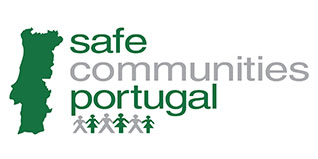Cybercrimes committed in Portugal have multiplied exponentially since the beginning of the covid-19 pandemic and may increase by 300% by the end of April, according to indicators from the Attorney General’s Office (PGR) ).
Data from the PGR cybercrime bureau on the evolution of cybercrime phenomena in Portugal reveal that the number of crimes committed in this area “multiplied very significantly” in March, with an increase of 230%, taking into account February and February figures. even more in April with a 165% increase by 16th.
According to the report, the 165% increase in the practice of this crime until the 16th “allows us to calculate that, if this trend continues, the percentage increase in April may be higher than 300%”.
The complaints of online crimes received by the Cybercrime Office have been “consistently increasing between 2016 and 2019” and, “in addition to the clear progression in the number of complaints” in recent years, “the complaints received in 2020 (until the 16th) have already exceeded those throughout the year 2018 and approach the total number of 2019 ”.
The report shows an exponential increase in complaints about cybercrime received in March and April.
As of April 16, 162 complaints had been received and forwarded to the opening of an investigation 28, while last year 193 situations were reported, of which 67 led to an investigation by the Public Ministry (MP).
In March, there was an increase of 230%, in comparison with the values of February and in the first 16 days of April, the complaints had an increase of 165%.
“If this trend continues, the percentage increase in April may be around 330%”, says the report.
In the first two months of the year, the office received 40 complaints, with nine forwarded to open an investigation.
In March, 46 complaints were received and 13 were sent to criminal investigations, and by April 16, 76 complaints have been received, of which six will give rise to an investigation.
As for the type of crime reported by citizens, these are mostly related to fraud in the use of the MB WAY payment application, the diffusion of email and SMS messages containing malware (computer viruses), ‘phishing’ campaigns and extortion by email .
The office stresses that, in cybercrime statistics, in addition to classic computer crimes, they count scams on online sales platforms, illicit dissemination of photographs, crimes against honour, dissemination of child pornography or crimes against copyright.
“A good part of these criminal practices already existed before, but they came to gain a new space in the communication networks. However, Justice statistics, in general, agglomerate crimes according to legal types (for example scams, crimes against honour, crimes against copyright), not separating those that occur ‘online’ from the others and, therefore, it is not easy to perceive, from a statistical point of view, the real dimension of cybercrime ”, underlines the report.
